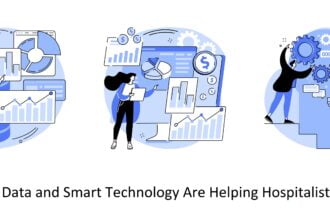Identity theft is a growing problem in the United States. Experts estimate that over 13 million people have their identity stolen every year. Unfortunately, advances in digital technology have exacerbated the problem. At the same time, they offer new solutions to people that could have their identity stolen.
Big data is both a weapon and liability with identity theft. As technology advances, big data has become an essential tool used by businesses to store and analyze large amounts of data. By gaining insights into customer behavior, businesses are able to provide more personalized services that directly benefit the user experience. However, the vast amount of data stored on corporate servers makes them vulnerable to cyber criminals looking to exploit this information for their own gain.
Identity theft is one of the most dangerous threats posed by big data exploitation, as it puts individuals at risk of having their personally identifiable information (PII) stolen and misused in malicious ways. Companies must take extra care when collecting personal information from customers in order to ensure that this sensitive data is not accessible by cybercriminals. This includes employing rigorous security protocols such as two-factor authentication and encryption technologies when handling customer PII.
Big data makes our identities more vulnerable
Almost every sensitive piece of information about us is available online somewhere. Our Social Security Numbers, addresses, family lineage, income and educational information is all stored on a number of servers online.
Many of the most sensitive types of business that we do is conducted online these days. Federal tax returns are one of the biggest examples. Less than 9% of all tax returns are filed by paper these days. Virtually everybody files their taxes online.
People also use the Internet to make purchases, apply for jobs, purchase health insurance, trace their family history and renew their driver’s licenses.
Unfortunately, any of these systems could be hacked. Highly sensitive information, such as records at healthcare.gov are encrypted. The bad news is that a lot of information is not encrypted, which leaves it vulnerable to hackers. Even encrypted information could be at risk if the hackers get access to the key.
There are at least 400 major data breaches every year. This creates a serious risk for anybody that has ever stored information online.
Big data also offers valuable preventive solutions
These reports may have left you with a sour taste about the risks of big data. The good news is that big data can also be a valuable weapon against identity thieves. Here are some solutions that it has made possible.
Biometric safeguards
In the early days of the Internet, passwords were the only means of protection that users had available to them. If their password was compromised, their entire account could be vulnerable to hackers. As more sensitive information was stored on the Internet, websites began enhancing security by using security questions as well.
Unfortunately, these extra safeguards have proven to be insufficient for protecting highly sensitive information. Biometric technology could be the new line of defense that will address these concerns. Retinal scans and fingerprinting technology is much more difficult to crack. Any user could store their biometric information in a blockchain protected server and use it to provide and deny access to various online accounts.
Monitoring websites known for sharing private information
The hackers that steal sensitive data aren’t always the parties that steal identities. Sometimes they sell information online. Other times they threaten to release it if the hosting company doesn’t pay a ransom. They may even release it online just to be malicious.
A lot of websites are set up to dox people or sell their sensitive information. The good news is that many identity theft protection tools mine the Dark Web and other websites that this information is often shared. They can find out if a subscriber’s social Security number, credit card information or other personal data has been shared on any of these sites. If it has been shared, they can immediately alert the user to change their data and flag the information in case an identity thief attempts to use it. This is one of the ways that identity thieves are being taught these days.
Run a risk assessment on other users
When users join websites, the site managers can try to do a risk assessment to determine if they are likely to swindle other users. Many online dating websites are doing these analyses to prevent catfishing, identity theft and other serious crimes. They recognize the need to protect their users, so it is cost to start a dating website.
Look at the context of multiple purchases for potential fraud
Identifying a single fraudulent purpose is not easy. Fraud detection algorithms need to evaluate a series of transactions to determine whether the purchases were authorized or not. They will determine:
- Whether the purchases were made in the customer’s place of residence
- If the purchases were made for controversial products used by people with certain addictions are vices, such as adult videos were memberships to torrent sites
- How frequently transactions were placed
- Whether the volume of the transactions is higher than normal
Sophisticated data mining tools can monitor these transactions in real-time. Fraud detection algorithms will use this data to determine the likelihood that financial information has been compromised. This mitigate the risk for customers and their financial institutions.









